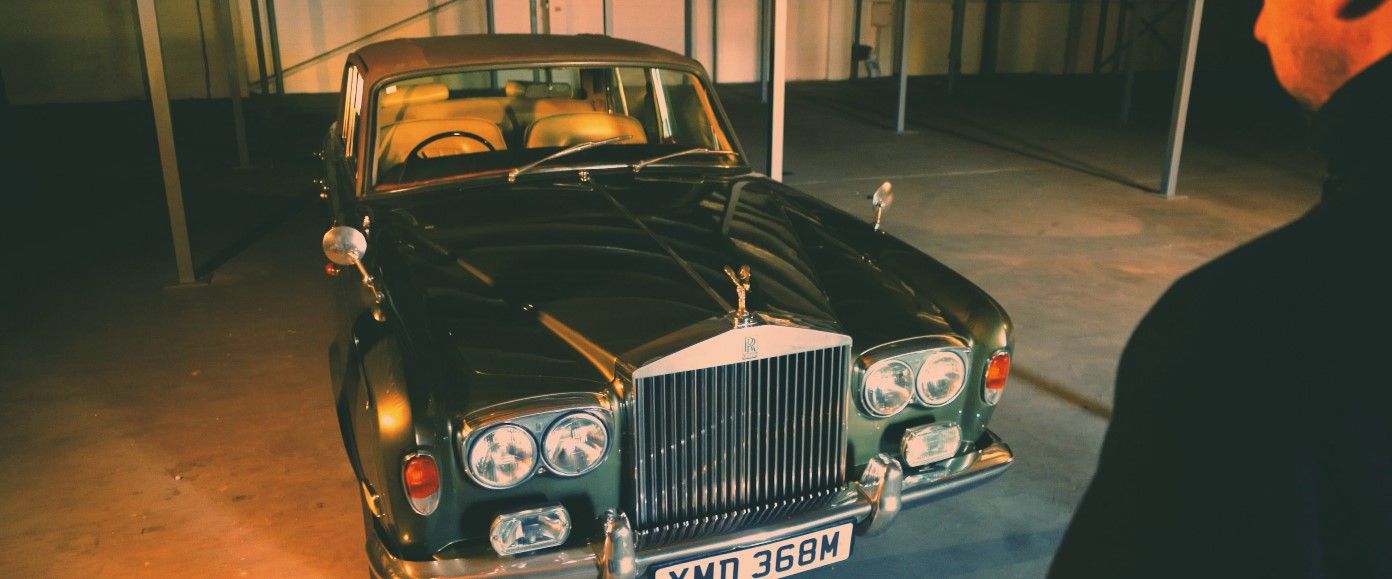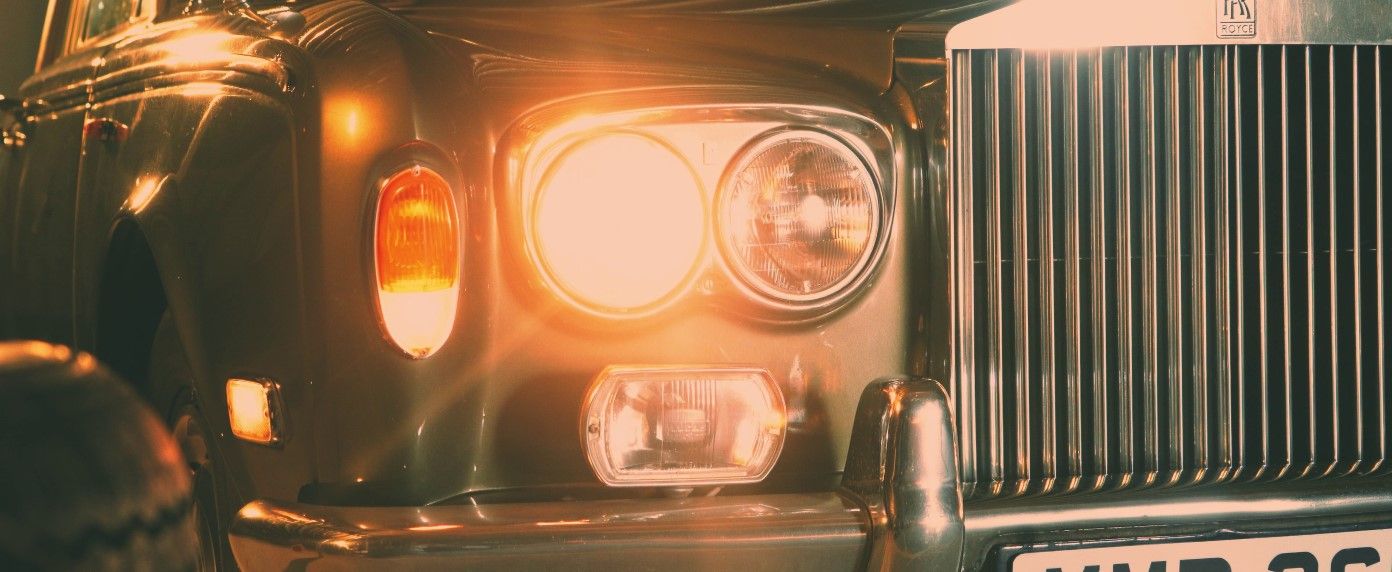Flying Spares’ Guide to bringing your car out of its winter storage
Back in the autumn we brought you our Flying Spares’ Guide to Seasonal Storge, detailing how to prepare your classic Rolls-Royce or Bentley for hibernation over the winter months. Seasonal Storage
Well, guess what? “Birds delight, day and night”, as William Blake said, for spring has sprung! Yes, it’s finally time to bring your pride and joy out of hibernation and get motoring again.
Our 5 essential steps to getting your classic Rolls-Royce or Bentley back on the road are:
-
Paperwork
-
In-garage checks
-
Start your engine
-
In-car essentials
-
The shakedown drive
Paperwork
Before you even unlock the garage, let alone remove the car cover, check your paperwork, and make sure you’re all legal. Locate your insurance documents and MOT certificate (if required). Any need to amend the registered keeper’s address? What about the breakdown cover? There are some great apps to help you keep track of all these things these days. Oh, and do you know where the spare set of keys are?
In-garage checks

We know the temptation to hop in and head straight out for a drive is strong, but please don’t, not yet! Before starting the engine after an extended period of storage, always give your classic Rolls-Royce or Bentley a thorough visual inspection, both inside and out.
Grab a torch and have a look underneath too if you can. Any signs of damage or deterioration – cracked paint or corrosion on the exterior, damp on the interior? If all is clear, next up is some basic maintenance. Pop the bonnet, check your fluid levels, and look for leaks. Rubber belts and hoses, in particular, will have expanded and contracted with temperature changes – any obvious cracks or perishing? Are all clamps and mounts in place? No loose connections?
Remember the FORCES acronym – F for fuel, O for oil, R for rubber, C for coolant, E for electrics and S for screenwash.
Fuel: As detailed in our “Increased Ethanol Content In Petrol” feature, classic cars put away for winter are prime candidates for E10 fuel issues. Especially if coming out of long-term storage (12 months+), consider draining the old fuel and filling afresh. Most importantly, make sure you have enough in the tank for a decent test drive. E10 Fuel - What Should You Look Out For
Oil: Did you change the oil and filters before you put the car away for the winter? In any case, check the levels are where they should be. Is the motor oil still golden, not milky or black? Castrol Classic Oil Recommendations
Rubber: First, check your tyres for major anomalies – bumps or cuts. Then use a tyre depth gauge, or the 20p test – the outer band of the coin should be obscured when inserted into a groove – to check for excessive wear. Finally, ensure that all four corners (and the spare!) are correctly inflated and not punctured.
Coolant: When it comes to engine maintenance, replenishing your coolant is a big one, helping to prevent overheating during the hottest months of the year. Flying Spares offers a wide range of products, including full-service kits and new green or purple coolant.
Green Coolant 5 Litres - UE70936L5P
Violet/Purple Coolant 5 Litres - JNV862564
Electrics: If you removed the battery, or had it on a trickle charger, now’s the time to reconnect it. If it’s gone flat, get it up to full charge or consider investing in a new one. Perhaps give the terminals a quick clean and give any visible wiring the once over. Remember, we’re not turning the ignition on yet – we’ll come to checking lights and such in step 3.
Screenwash: Finally, check your front and rear screenwash levels, and while you’re at it ensure all wiper blades are still in good condition.
Start your engine

Preparation complete, the big moment has arrived – start your engine! If it doesn’t fire up immediately, a quick spray of starter fluid might do the job. Does the handbrake release ok? If all’s well, pull out onto the drive for a bit more space and better light. Is the foot brake working?
Let it run for a few minutes, long enough to burn off any moisture. Does the fan cut in ok? Are all your lights working, including the hazards? And the wipers? Excellent! Now, let it cool down, recheck for leaks, and, if you’re feeling confident, you could even reset the clock.
In-car essentials

You’re nearly ready for the open road. Before you go, make sure all your in-car essentials are present and correct – jack, first aid kit, warning triangle, high vis vest, fire extinguisher and fuel can. Is the wheel nut in the glovebox?
If you didn’t do it prior to garaging, or perhaps even if you did, how about a clean and polish? After all, you want your classic Rolls-Royce or Bentley to be sparkling for its first public appearance of the year… and you could give it a final visual inspection at the same time.
Autoglym
If your car’s convertible, now’s the moment to get the top down – to test the mechanism if nothing else! Got your phone and sunglasses? A summer of motoring awaits.
The shakedown drive

At long last, you’re ready to hit the road again, but not for a day trip. The final step is the shakedown drive – a short run of, ideally, only 10-15 miles, so you’re close to home should anything go wrong.
Thoroughly test the brakes. Have any dashboard lights come on? How does the steering feel? Any worrying sounds or vibrations? Remember to try it in reverse too. If you have any concerns, consider a spring service – safety is paramount and it’s a great way to get peace of mind. Otherwise, the world’s your oyster.
Recommended Garages For Rolls-Royce & Bentley Cars
Keep an eye out for other road users enjoying the sunshine – horse riders, cyclists and pedestrians. Above all, luxuriate in your Rolls-Royce or Bentley. You’re at the pinnacle of British automotive engineering.
Have a great summer!
